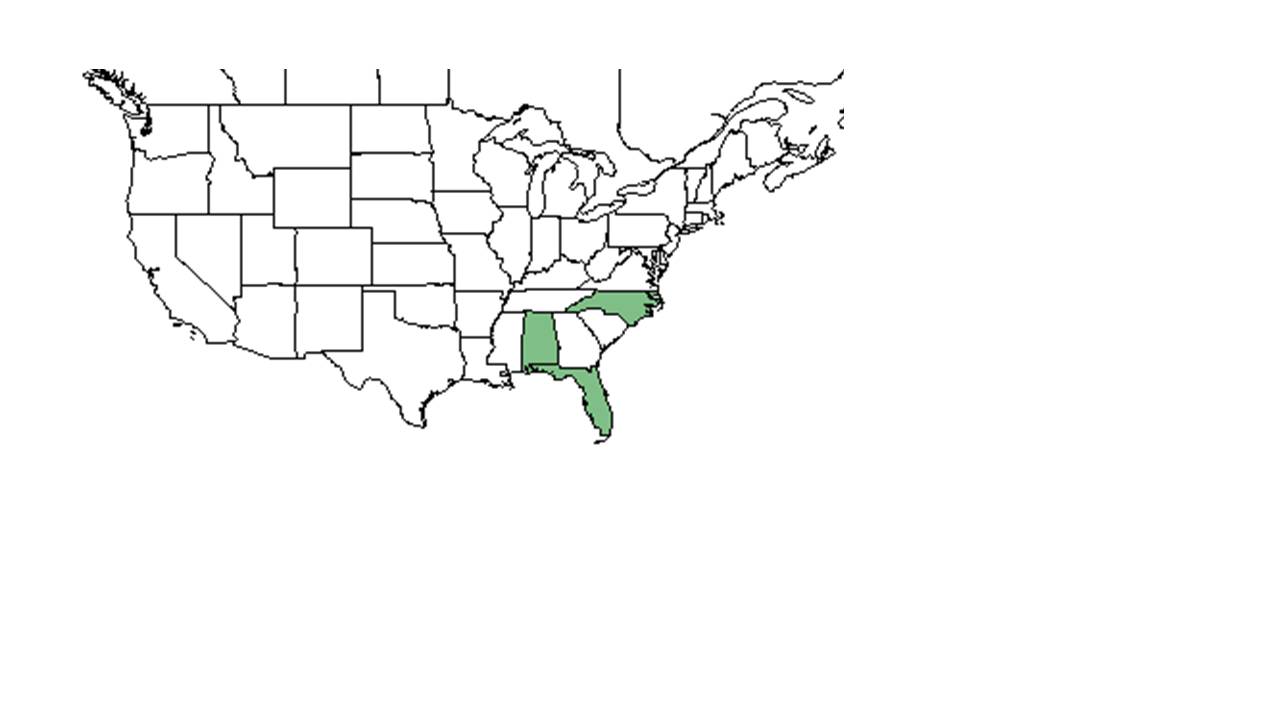Difference between revisions of "Andropogon arctatus"
Krobertson (talk | contribs) |
Krobertson (talk | contribs) |
||
| Line 32: | Line 32: | ||
===Phenology===<!--Timing off flowering, fruiting, seed dispersal, and environmental triggers. Cite PanFlora website if appropriate: http://www.gilnelson.com/PanFlora/ --> | ===Phenology===<!--Timing off flowering, fruiting, seed dispersal, and environmental triggers. Cite PanFlora website if appropriate: http://www.gilnelson.com/PanFlora/ --> | ||
| − | It flowers from late September to frost.<ref name="Kral1983"/> It has been observed fruiting from October through November<ref name="FSU">. | + | It flowers from late September to frost.<ref name="Kral1983"/> It has been observed fruiting from October through November<ref name="FSU"></ref>. |
===Seed dispersal=== | ===Seed dispersal=== | ||
Revision as of 10:11, 18 May 2016
| Andropogon arctatus | |
|---|---|

| |
| Photo by Ann Johnson, Atlas of Florida Vascular Plants | |
| Scientific classification | |
| Kingdom: | Plantae |
| Division: | Magnoliophyta - Flowering plants |
| Class: | Liliopsida – Monocotyledons |
| Order: | Cyperales |
| Family: | Poaceae ⁄ Gramineae |
| Genus: | Andropogon |
| Species: | A. arctatus |
| Binomial name | |
| Andropogon arctatus Chapm. | |

| |
| Natural range of Andropogon arctatus from USDA NRCS Plants Database. | |
Common names: Florida bluestem, pineland bluestem
Contents
Description
It is a perennial. [1] Perennial grass growing up to 1.5 m tall. The leaves are long and narrow and tend to curl. The spikelets are numerous and have paired racemes that grow from the sheaths. The flowers are densely covered with tawny hairs. The seeds are wind-dispersed. [2]
Distribution
It is occasionally found in northern and central peninsula of Florida; central and western panhandle. [3] It is found in Florida and Alabama. There is records showing that this species was found in North Carolina as well. [4]
Ecology
Habitat
This species grows scattered throughout its habitat but is very abundant[5]. It is found in moist, sunny, low grass-sedge clearings and open pine flatwood and savanna communities [6] as well as pinelands. [4] It is found in dry to wet loamy sands and sand pine scrub environments [3] Cite error: Closing </ref> missing for <ref> tag
Phenology
It flowers from late September to frost.[6] It has been observed fruiting from October through November[5].
Seed dispersal
The plumed seeds are wind-dispersed. [2]
Fire ecology
It is maintained by fire. [6] Flowers in the fall after a fire event has occurred that same year.annjohnson[7]
Conservation and Management
Is listed as vulnerable. [2]
References and notes
- ↑ Hall, David Walter (1978). “The Grasses of Florida.” University of Florida – Dissertation. 442. Print.
- ↑ 2.0 2.1 2.2 Nature Serve. (2015) “NatureServe Explorer: An online encyclopedia of life [web application].” Version 7.1. NatureServe, Arlington, Virginia. Available http://explorer.natureserve.org. (Accessed: March 29, 2016 ).
- ↑ 3.0 3.1 Wunderlin, Richard P. and Bruce F. Hansen (2003). “Guide to the Vascular Plants of Florida.” Second edition. University Press of Florida: Gainesville/Tallahassee/Tampa/Boca Raton/Pensacola/Orlando/Miami/Jacksonville/Ft. Myers. 177. Print.
- ↑ 4.0 4.1 Weakley, Alan S. (2015). "Flora of the Southern and Mid-Atlantic States: working draft". University of NCU. 354. Print
- ↑ 5.0 5.1 Florida State University Robert K. Godfrey Herbarium database. URL: http://herbarium.bio.fsu.edu. Last accessed: June 2014. Collectors: Robert K. Godfrey, Ann F. Johnson, Debbie White, Loran C. Anderson, A. F. Clewell, Christopher Campbell, Angus Gholson, Dennis Hardin, and Ann F. Johnson. States and Counties: Florida: Franklin, Liberty, Jackson, Gulf, Bay, Leon, and Calhoun. Georgia: Liberty.
- ↑ 6.0 6.1 6.2 Kral, R. (1983). "Andropogon arctatus Chapm. A report on some rare, threatened or endangered forest-related vascular plants of the South." Atlanta, GA, USDA Forest Service, Print. 183: 40-43.
- ↑ Ann Johnson black creek bog phenological data 1993-2015